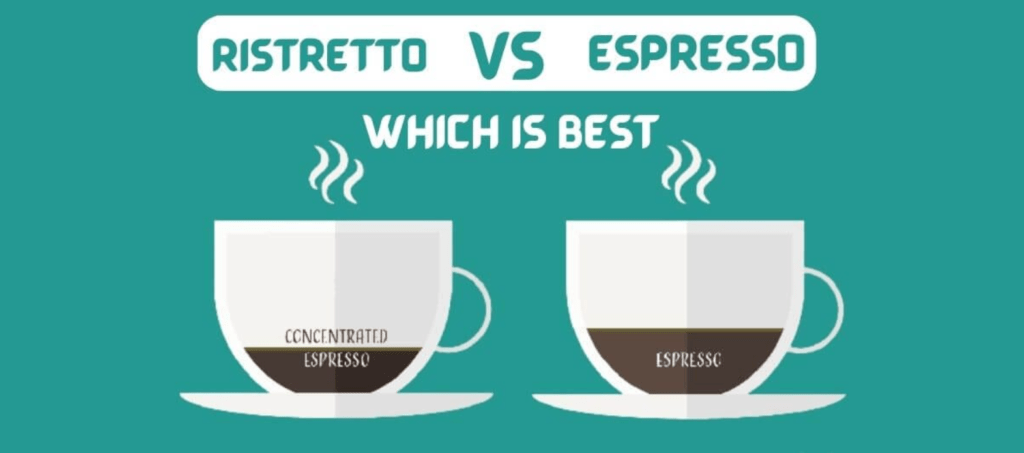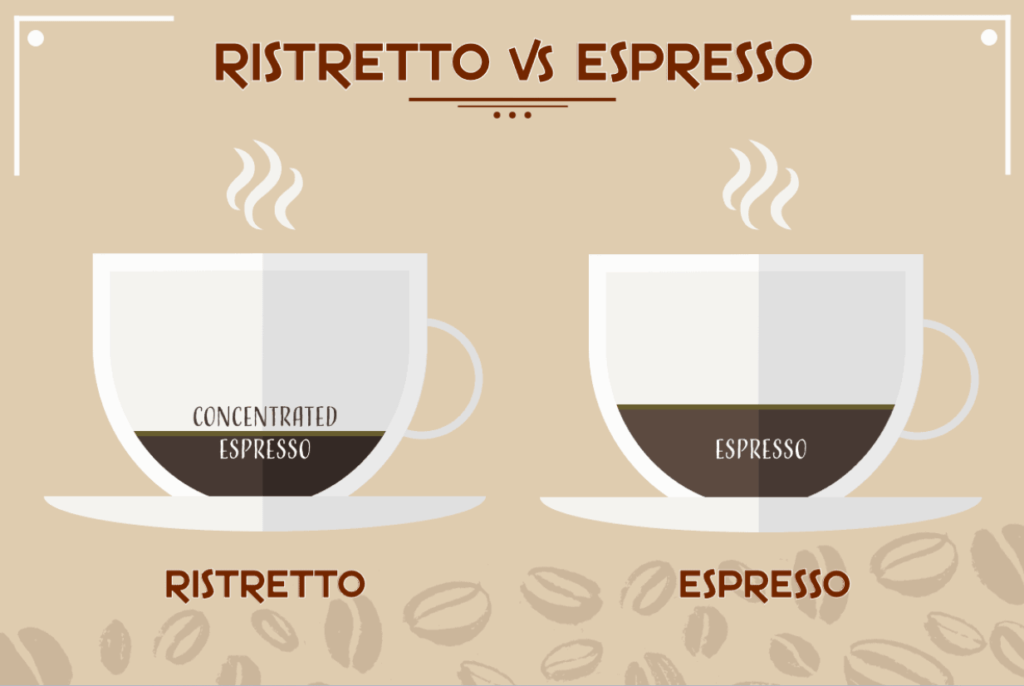Ristretto vs Espresso
When it comes to coffee, one might immediately think of the classic espresso, known for its robust flavor and remarkable aroma. However, an often overlooked contender in the world of caffeinated beverages is the ristretto. Known as a “short shot,” the ristretto offers an intense flavor experience, often preferred by coffee aficionados. But what distinguishes these two brews? In the ristretto vs espresso debate, it all comes down to the extraction process, the amount of coffee and water used, and, ultimately, the flavor profile. Let’s delve deeper into the nuanced world of these two beloved coffee siblings.
The Extraction Process: Quality over Quantity

The main difference between ristretto and espresso is the extraction process. Espresso is extracted using around 30 ml of water, making it a concentrated and strong shot of coffee. On the other hand, ristretto uses only about 15 ml of water, resulting in an even more concentrated and intense shot. This smaller amount of water allows for a shorter extraction time, resulting in a more intense flavor.
The Amount of Coffee Used: Size Matters
Another noticeable difference between ristretto and espresso is the amount of coffee used. For an espresso shot, typically 7 grams of finely ground coffee beans are used, while for a ristretto shot only around 5 grams of coffee are used. This may seem like a small difference, but it can significantly impact the taste and strength of the final product.
The Flavor Profile: Bold vs Intense
Perhaps the most crucial aspect in the ristretto vs espresso battle is the flavor profile. Espresso is known for its bold and robust flavor, with a slightly bitter aftertaste. On the other hand, ristretto’s shorter extraction time results in a more intense and concentrated flavor, with a sweeter and smoother finish. Ultimately, it all boils down to personal preference and the desired flavor experience.
Which One is Better Ristretto or Esppresso?

In the end, it’s not about which one is better; it’s about which one suits your taste buds. If you enjoy a strong, bold cup of coffee, then espresso is your go-to. But if you prefer a more intense and concentrated flavor, ristretto might be the right choice for you. The best way to find out is by trying both and deciding for yourself which one reigns supreme in the ristretto vs espresso debate.
The Battle Summarized: Ristretto vs Espresso
The distinction between ristretto and espresso lies primarily in the extraction process, coffee quantity, and flavor profile. For extraction, espresso uses about double the water of a ristretto, leading to a bolder, more robust flavor. When it comes to coffee quantity, espresso shots employ more coffee grounds than ristretto, attributing to its stronger taste. The flavor battle is subjective and depends on individual taste buds – espresso offers a bold, robust flavor with a slightly bitter aftertaste, whereas ristretto boasts an intense, concentrated flavor with a smoother, sweeter finish. In the end, it’s not about one being superior to the other, but more about which brew suits your personal preference.
The Origins and History: Tracing Back to the Roots
Tracing the roots of these two incredible coffee variations, ristretto and espresso, takes us back to Italy, the birthplace of espresso. The term ‘Espresso’ is derived from the Italian meaning ‘express’ or ‘fast’, reflecting the speed at which this style of coffee can be prepared. In the late 19th century, espresso machines were invented to speed up the coffee brewing process, establishing espresso as a quick, robust, and flavorful beverage.
The term ‘Ristretto’, on the other hand, means ‘restricted’ in Italian. It came into existence much later, offering coffee lovers a more intense variant of espresso. The ‘restricted’ extraction process involves using less water, providing a more concentrated and robust coffee shot. Due to its unique flavor profile, Ristretto quickly gained popularity among coffee enthusiasts.
While both espresso and ristretto originated in Italy, they have found their way into coffee shops worldwide, each offering a unique and invigorating coffee experience that continues to delight coffee lovers to this day.
Cultural Significance: More Than Just Coffee
The cultural significance of both espresso and ristretto extends far beyond their distinctive taste and aroma. In Italy, where both beverages originated, coffee is not merely a drink; it is deeply entwined with the country’s culture and social customs. Espresso serves as the backbone of Italian coffee culture, often consumed in small, bustling cafes as a quick pick-me-up during the day. It is common to see Italians standing at a bar, sipping their espresso, and engaging in animated conversations.
Ristretto, with its concentrated flavor, has carved its own niche within this culture. It’s regarded as a refined and elegant form of espresso, often savored slowly for its unique taste. Its popularity has transcended borders, with many coffee connoisseurs worldwide preferring the intense flavor of ristretto.
The significance of these beverages also extends to the art of coffee making. Barista competitions around the world often feature espresso and ristretto, with participants striving to extract the best possible flavor and aroma from the coffee beans. The skill and precision required in brewing these drinks highlight their importance in the world of coffee.
In sum, espresso and ristretto are not just coffee types; they represent a way of life, a form of art, and a bridge that connects different cultures through the universal language of coffee.
Frequently Asked Questions: Demystifying Ristretto and Espresso
Q1: Is Ristretto stronger than Espresso?
While Ristretto is more concentrated than Espresso, it does not necessarily mean it’s stronger. The strength of the coffee depends on several factors such as the type of coffee bean, roast level, and brewing method. Both Ristretto and Espresso offer robust flavors, but Ristretto tends to have a more intense, concentrated flavor due to the restricted water usage.
Q2: Can I make Ristretto with any Espresso machine?
Yes, you can make Ristretto with any Espresso machine by adjusting the water volume. The key to making a good Ristretto is to use the same amount of coffee as an Espresso shot but half the amount of water.
Q3: Why does Ristretto taste sweeter than Espresso?
The sweetness in Ristretto comes from its short extraction time. The initial part of the coffee extraction process yields the sweetest flavors, so by using less water and reducing the extraction time, you end up with a sweeter shot of coffee.
Q4: Is there a significant caffeine difference between Ristretto and Espresso?
There is a misconception that Ristretto has more caffeine due to its concentrated nature. However, because Ristretto uses less water and coffee grounds, the caffeine content is somewhat similar to or even slightly less than that of Espresso. The exact caffeine level can vary depending on the type of bean and brewing parameters.
Q5: Which is more popular, Ristretto or Espresso?
Both Ristretto and Espresso have their own fan bases. Espresso, being the classic form of coffee, enjoys widespread popularity. Meanwhile, Ristretto, with its unique, intense flavor, has gained a dedicated following among coffee connoisseurs. The preference between the two ultimately boils down to individual taste.
In Conclusion: Finding Your Perfect Brew
In the end, whether you prefer the bold punch of Espresso or the intense flavor of Ristretto, it all comes down to personal taste and preference. These two coffee variations may have a shared origin, but they offer distinct experiences that cater to different palates and moods.
So next time you’re at your favorite coffee spot, don’t hesitate to give Ristretto or Espresso a try. Who knows, you might discover your new favorite brew and join the ever-growing community of coffee enthusiasts who appreciate the art and science behind these fascinating coffees. Keep exploring, keep sipping, and enjoy your coffee journey! Happy brewing!


Although I enjoy your website, you should proofread a few of your pieces. Many of them have serious spelling errors, which makes it difficult for me to convey the truth. Nevertheless, I will definitely return.
Your article helped me a lot, is there any more related content? Thanks!